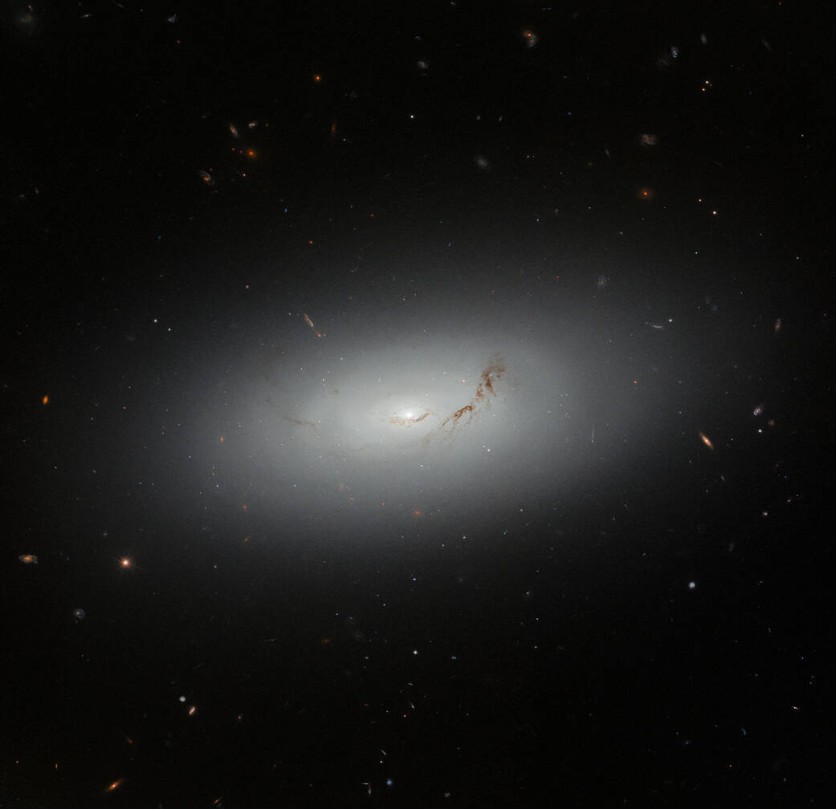The NASA/ESA Hubble Space Telescope has captured a dreamy view of the galaxy known as NGC 3156. This celestial entity situated approximately 73 million light-years away in the minor equatorial constellation Sextans presents an otherworldly sight.

NASA: A Lenticular Galaxy in Dreamlike View
NGC 3156 belongs to the category of lenticular galaxies, characterized by two distinct threads of dark reddish-brown dust traversing its disk. Lenticular galaxies exhibit a lens-like appearance when viewed from the side or edge-on. Hence, it explains where they got their name.
They occupy a middle ground between elliptical and spiral galaxies, displaying attributes of both, according to NASA. Much like spirals, lenticular galaxies possess a central bulge of stars surrounded by a vast disk.
They often bear dark dust lanes similar to spirals but lack large-scale spiral arms. On the other hand, akin to ellipticals, lenticular galaxies predominantly host aging stars with limited ongoing star formation.
These galaxies represent an intriguing blend of spiral and elliptical characteristics. While they share the central bulge and disk typical of spirals, they lack distinctive arms.
Like ellipticals, lenticular galaxies feature populations of older stars and limited ongoing star formation. Experts have proposed several theories concerning the evolutionary trajectory of lenticular galaxies.
One hypothesis suggests that these galaxies are essentially aging spirals, with their once-prominent arms now faded. Another theory posits that lenticulars formed through mergers of spiral galaxies.
All About the NGC 3156 Galaxy
NGC 3156 has been subject to extensive scrutiny by astronomers, who have investigated various aspects, ranging from its collection of globular clusters, or clusters of stars bound together by gravitational forces, generally spherical in shape, to stars being consumed by the supermassive black hole at its core.
Through careful analysis of Hubble data, scientists compared stars near the galaxy's nucleus with those in galaxies harboring similarly sized black holes.
The findings revealed that NGC 3156 exhibits a higher-than-average proportion of stars being absorbed by its supermassive black hole when juxtaposed with its counterparts.
In related news, NASA's James Webb Space Telescope is playing a pivotal role in addressing the perplexing cosmic problem called the "Hubble Tension." This enigma involves the variation between the Hubble Constant's value, which signifies the universe's expansion rate.
Nobel Laureate Adam Riess, affiliated with the Johns Hopkins University and the Space Telescope Science Institute, and his colleagues had publicly released their recent work. Click this to learn more.
Related Article : NASA's Hubble Space Telescope Captures 'Butterfly Nebula' In Stunning Motion | Fun Facts About This Beautiful Space Butterfly

![Apple Watch Series 10 [GPS 42mm]](https://d.techtimes.com/en/full/453899/apple-watch-series-10-gps-42mm.jpg?w=184&h=103&f=9fb3c2ea2db928c663d1d2eadbcb3e52)



